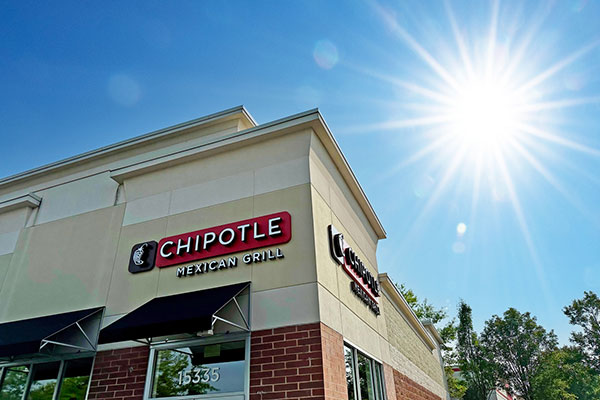Investors piling into US funds, but are they joining the party too late?
A narrow focus on US tech stocks obscures a swathe of opportunities available in the US market. Cherry Reynard asks whether investors are buying into the tech theme too late in the day, and highlights better value opportunities elsewhere.
4th June 2024 09:14
by Cherry Reynard from interactive investor

The FTSE 100 hit new highs recently, but UK investors have found the US market far more seductive. Its fast-growth technology sector has had particular appeal, with advancements in artificial intelligence (AI) promising to deliver the next wave of punchy growth.
However, with some cracks starting to show for the Magnificent Seven, with Tesla’s share price deep in the red so far in 2024, it may be worth exploring what else the US stock market has to offer.
- Invest with ii: Buy Global Funds | Top Investment Funds | Open a Trading Account
Calastone’s Fund Flow Index shows UK investors have directed more cash towards North American equity funds in the last four months than they have in the previous nine years combined. This chimes with Investment Association (IA) data, which shows funds in the IA North America sector drew in £468 million in March - the same month that saw £887 million leave funds in the UK All Companies sector.
It is difficult to argue with the logic for US markets. The S&P 500 continues to outpace its peers, up 23.7% over the past 12 months. The FTSE 100 has delivered a less impressive 9.1% over the same period. The US has everything to recommend it - a strong currency, world-beating companies and a fast-growing economy.
The problem is the concentration of those returns. The Magnificent Seven – Alphabet (NASDAQ:GOOGL), Apple (NASDAQ:AAPL), Amazon (NASDAQ:AMZN), Meta Platforms (NASDAQ:META), NVIDIA (NASDAQ:NVDA), Microsoft (NASDAQ:MSFT) and Tesla (NASDAQ:TSLA) - single-handedly generated around 60% of the S&P 500 return in 2023, and more than one-third of its gains so far in 2024.
A lot of the flows into funds investing in the US, technology, or even those with a global remit, will be heading for these companies. Among the most popular funds on the interactive investor site is L&G Global Technology Index, which has more than half its assets in the US tech giants. The Vanguard US Equity Index is lower, but still just over 20%. They are also the top holdings in HSBC FTSE All-World Index. In short, any US or global investment that pays even the slightest attention to the index will have a significant allocation to these companies.
The problem for investors is that it is uncomfortably reminiscent of the technology bubble, where late-to-the-party investors had their fingers burnt. The S&P 500 took seven years to recapture the highs of August 2000 as the bubble burst.
Not dotcom
Many investors in US markets do not believe this is the same phenomenon. The top-performing stocks in the US today have astonishing earnings, near-monopolistic market positions and vast cash balances. US market’s continue to be a source of widespread innovation.
James Thomson, manager of Rathbone Global Opportunities fund, says: “The US always comes out in the lead. It is the home of innovation, adaptability, resilience. A lot of that growth is because of what its largest companies offer. They’re mission critical. There are six trillion-dollar market cap companies in the world and they’re all in the US – and we’re probably in a world where the strong get stronger. The largest companies, by virtue of their dominance, have the scale and leverage to grow even faster.” Thomson has the largest weighting he has ever had in the US in his fund, at just below 70%.
Alan Ray, investment trust research analyst at Kepler Partners, agrees that these companies still appear to have strong long-term growth prospects, adding, “the investor who held their nerve in the spring of the year 2000, holding on to their shares in Amazon as one example, would have seen an extraordinary return in the following 24 years, despite some unnerving moments along the way”.
However, he admits that strong fund flows today may bring investors with unreasonably short-term expectations, and that may exacerbate shorter-term volatility. Plus, there have been wobbles amid the Magnificent Seven. The recent experiences of Tesla and Apple show what happens when high expectations are disappointed. Tesla’s share price is down -27.7% for the year-to-date, while Apple, up 5%, has also trailed the wider S&P 500.
- The global stock market looks expensive: what should investors do?
- Stock markets at records and cash at 5%: what will happen next?
Perhaps more importantly, a narrow focus on these areas neglects a vast swathe of opportunities available elsewhere in the US market. The US is the broadest and most liquid market in the world and many good companies have been overlooked amid FOMO on US technology companies.
Christopher Rossbach, manager of the J.Stern & Co. World Stars Global Equity Fund, says: “The ‘great rotation’ in stock markets since the US Fed started raising rates at the end of 2021 has favoured many great technology companies. However, the rotation has left behind many other companies that have high quality and offer great upside as well. We expect stock markets to broaden from their narrow focus on the Magnificent Seven.”
Rossbach says this is already happening, with investors becoming more selective and more attuned to company fundamentals rather than sentiment and hype.

Alternative growth options
Rossbach says investors in US markets have focused narrowly on a single growth story - AI - to the expense of other growth stories. He notes: “While the demand for increasing capacity, artificial intelligence and other applications will be important drivers of growth and productivity for the global economy, so will increased healthcare spending and support of an ageing population; and the need to address challenges like global warming, energy transition and water supplies.”
Among his favoured holdings are life sciences group Thermo Fisher Scientific Inc (NYSE:TMO). The life sciences industry is benefiting from strong structural growth trends, including demand for biologics, robust pharma pipelines and a growing focus on precision medicine. He also likes Eaton Corp (NYSE:ETN), a global leader in power management solutions. He points out that AI is fuelling investments in the industrial sector, a connection that is often overlooked.
Ray says there are some North American specialist investment trusts that can help investors diversify away from the large technology companies. He suggests JPMorgan American Ord (LSE:JAM), which predominantly invests in large US companies.
- Another chance to buy into this dominant global brand
- Sign up to our free newsletter for share, fund and trust ideas, and the latest news and analysis
Ray points out: “The fund managers have successfully navigated a market where growth has been in favour, but the flexibility is there to favour a more value-orientated approach when they feel the time is right.
“The trust also takes the same approach with its allocation to smaller companies, which is a relatively small part of the whole portfolio, but means that investors have a broad exposure across the entire market.”
Another option would be Pershing Square Holdings Ord GBP (LSE:PSH), run by high-profile US investor Bill Ackerman. The fund invests in a concentrated portfolio of eight to 12 companies. These are companies with simple, predictable business, high free cash flow, with a clear pipeline of growth. They look to invest at a moment of “catalytic change”, and adopt a high touch approach to investment, often taking a seat on the board. It has just one of the Magnificent Seven – Alphabet. Its largest holding is Universal Music Group NV (EURONEXT:UMG), which sits alongside holdings in restaurant group Chipotle Mexican Grill Inc (NYSE:CMG) and property business Howard Hughes Holdings Inc (NYSE:HHH).
Smaller companies
With a strong focus on larger companies, US small and medium-sized companies have been largely overlooked. Hugh Grieves, manager on the Premier Miton US Opportunities fund, says this may be a better way to capitalise on the strength of the domestic US economy, which he believes will strengthen this year.
“Mid and small-caps are trading at a discount to the wider market, when they usually trade at a premium. I can’t remember a time in my career when they have traded at this scale of a discount,” says Grieves.
He holds companies such as Alabama-based Vulcan Materials Co (NYSE:VMC), and ticketing group Live Nation Entertainment Inc (NYSE:LYV). The result is a very different portfolio to the index.
- Six big bubbles to avoid and six value opportunities
- How to build a £1 million pension and ISA portfolio
Ray says: “Higher rates and inflation generally tend to favour larger companies, and this also helps explain why smaller companies have lagged the market. Investors who feel that interest rates will fall could consider adding to smaller companies trusts likely to benefit in such a scenario.” He suggests investment trust duo JPMorgan US Smaller Companies Ord (LSE:JUSC) or Brown Advisory US Smaller Companies Ord (LSE:BASC), both of which tend to favour quality growth companies.
The US technology giants may continue to defy gravity, but investors probably already have a significant allocation in their portfolio. The US markets have much more to offer, and at better valuations. It may be time to branch out.
These articles are provided for information purposes only. Occasionally, an opinion about whether to buy or sell a specific investment may be provided by third parties. The content is not intended to be a personal recommendation to buy or sell any financial instrument or product, or to adopt any investment strategy as it is not provided based on an assessment of your investing knowledge and experience, your financial situation or your investment objectives. The value of your investments, and the income derived from them, may go down as well as up. You may not get back all the money that you invest. The investments referred to in this article may not be suitable for all investors, and if in doubt, an investor should seek advice from a qualified investment adviser.
Full performance can be found on the company or index summary page on the interactive investor website. Simply click on the company's or index name highlighted in the article.